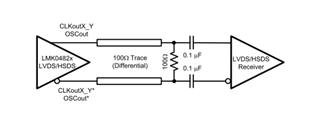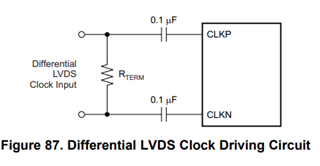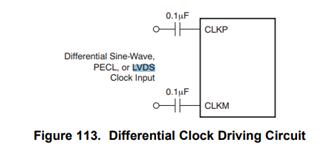Other Parts Discussed in Thread: ADS4122,
Hi,
I will using LVDS clock driver to drive the clock input of the ADS5296A and ADS4122.
in the DS of ADS5296A I find the followed:
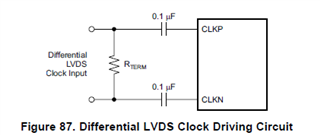
The answer to the same question for the ADS4122:
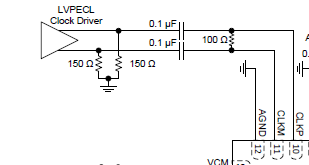
Pls. advise where to put the termination in both cases.
regards
Zeev Gerber



